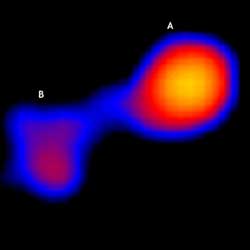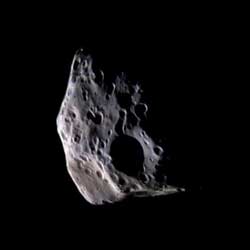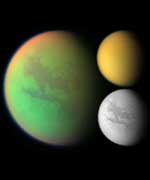
ESA astronaut Thomas Reiter from Germany, will be the first to do a long-duration spaceflight. Image credit: ESA. Click to enlarge.
This July, ESA astronaut Thomas Reiter from Germany is about to become the first European to live and work on the International Space Station (ISS) on a long-duration mission.
ESA Director of Human Spaceflight, Microgravity and Exploration, Daniel Sacotte, recently signed an agreement on the mission with the Head of the Russian Federal Space Agency (Roscosmos), Anatoli Perminov. “The agreement covers the ESA astronaut?s flight in a crew position originally planned for a Russian cosmonaut”, explained Sacotte, “and he will perform all the tasks originally allocated to the second Russian cosmonaut on board the ISS and, in addition, an ESA experimental programme.”
The agreement forms part of a set of bilateral understandings between Roscosmos and NASA and between ESA and NASA, enabling the implementation of the mission.
Thomas Reiter, the astronaut assigned to the mission, is a member of the European Astronaut Corps, based at ESA’s European Astronaut Centre (EAC) in Cologne, Germany. L?opold Eyharts, from France, a member of the same Corps, will be the back-up for this mission.
Reiter will reach the ISS on Space Shuttle flight STS-121 currently planned for next July, and return to Earth on flight STS-116 in February.
This will be Reiter’s second long-duration mission on board a space station, following his six-month stay on the Russian Mir, ten years ago, during the ESA Euromir 1995 mission.
“With the maiden flight of the Automated Transfer Vehicle (ATV) and the launch of the European laboratory Columbus, both in 2006, ESA is making important contributions to the ISS and its scientific capabilities and, consequently, we are assuming significant operational responsibilities in this programme. I am confident that this mission will give Europe a lot of operational experience and scientific results which will further prepare us for the exciting and challenging times ahead,” said Thomas Reiter.
“Moreover,” L?opold Eyharts pointed out, “as the back-up astronaut for this mission, I am receiving the same training as Thomas Reiter, which will be an excellent preparation for my tasks as prime astronaut for a future ESA mission to the ISS in connection with Columbus.”
Both astronauts are already in training for the mission in the various ISS training facilities at Houston, Moscow and Cologne, together with their Russian and American astronaut colleagues.
“For the first time, and as a test for later European long-duration missions to the ISS, mission preparation, training, operations and multilateral coordination will be carried out as far as possible through the multilateral decision-making and management structures established for ISS exploitation,” underlined ESA’s Mission Manager Aldo Petrivelli.
“This will be an excellent opportunity for testing coordination and cooperation between ground control and support centres like the Houston and Moscow Mission Control Centres, the Columbus Control Centre in Oberpfaffenhofen, near Munich (*), the European Astronaut Centre in Cologne and the various User Support and Operations Centres throughout Europe that will be involved in the mission. The operational teams from ESA, national space agencies, industry and research institutions in Europe will thus gain very useful operational experience, also for future Columbus system, subsystems and payload operations.”
Original Source: ESA News Release




